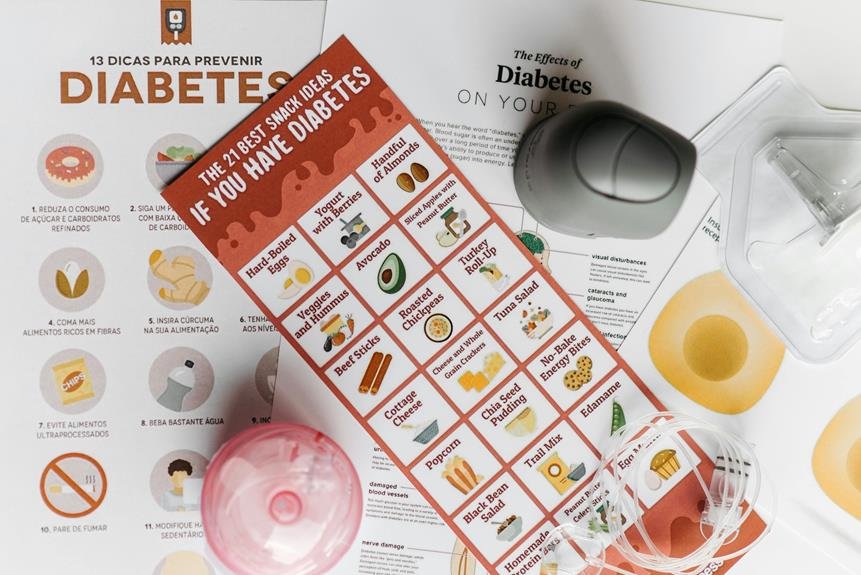
If you're looking to kickstart your journey into the world of the Keto diet, you've come to the right place. The step-by-step guide will walk you through the fundamentals of this low-carb, high-fat lifestyle, but there's more to it than just swapping out bread for bacon. From understanding how ketosis works to mastering the art of meal planning and navigating the grocery store aisles with confidence, this guide holds the key to unlocking the potential benefits of the Keto diet. So, are you ready to take the first step towards a healthier you?
Understanding the Keto Diet Basics
To grasp the fundamentals of the Keto Diet, begin by understanding the key principles of carbohydrate restriction and high fat intake. Carbohydrate restriction is at the core of the Keto Diet, as it shifts your body into a state of ketosis, where it burns fat for fuel instead of carbohydrates. By limiting your carb intake to around 20-50 grams per day, your body depletes its glycogen stores and starts breaking down fats into ketones for energy.
In contrast, a high fat intake is essential to maintain ketosis. Embrace healthy fats like avocados, olive oil, nuts, and fatty fish to fuel your body efficiently. These fats not only provide energy but also help you feel full and satisfied, reducing cravings and aiding in weight loss.
Starting Your Keto Journey
Now, embark on your Keto journey by taking the first steps towards adapting to this low-carb, high-fat lifestyle. Begin by cleaning out your pantry and fridge of foods high in carbohydrates and sugars. Replace them with keto-friendly alternatives like avocados, eggs, nuts, and low-carb vegetables. Educate yourself about the Keto diet by reading reputable sources and understanding the principles behind it. Set realistic goals for yourself, whether it's weight loss, improved energy levels, or better mental clarity.
To kickstart your journey, start tracking your daily macronutrient intake to ensure you're within the recommended Keto ratios. Consider investing in a food scale to accurately measure your portions. Stay hydrated by drinking plenty of water and electrolyte-rich beverages to combat the initial side effects of transitioning to Keto, such as the keto flu. Additionally, prioritize getting enough sleep to support your body during this adjustment period.
Meal Planning for Success
Embark on successful meal planning for your Keto journey by prioritizing nutrient-dense, low-carb options that align with your goals and preferences. Start by creating a weekly meal plan that includes a variety of protein sources like chicken, fish, and tofu. Incorporate plenty of non-starchy vegetables such as spinach, broccoli, and cauliflower to ensure you're getting essential vitamins and minerals. Healthy fats like avocados, olive oil, and nuts should also have a place in your plan to help you feel satisfied and energized.
When planning your meals, think about how you can mix and match different ingredients to keep things interesting. Consider preparing larger batches of food that you can portion out for multiple meals throughout the week to save time and ensure you always have a Keto-friendly option on hand. Don't forget to include snacks like cheese, hard-boiled eggs, or seeds to help curb cravings and keep you on track with your Keto goals.
Navigating Grocery Shopping
Prioritizing nutrient-dense, low-carb options in your grocery shopping is essential for a successful Keto journey. When navigating the aisles, focus on whole foods like leafy greens, avocados, olive oil, and fatty fish. These items are rich in essential nutrients and fit well within the Keto diet parameters. Opt for fresh produce over processed foods whenever possible to minimize hidden sugars and additives that can derail your progress.
Look for high-quality proteins such as grass-fed meat, free-range poultry, and wild-caught seafood to support muscle growth and repair.
Don't forget to stock up on healthy fats like coconut oil, nuts, and seeds to keep you feeling full and satisfied. Avoid sugary snacks, grains, and high-carb fruits that can spike your blood sugar levels. Reading labels is crucial; check for hidden sugars and unnecessary additives that can sneak into seemingly Keto-friendly products.
Lastly, stay hydrated by picking up sugar-free beverages and plenty of water to support your overall health and well-being on the Keto diet. By being mindful of your choices at the grocery store, you set yourself up for success on your Keto journey.




